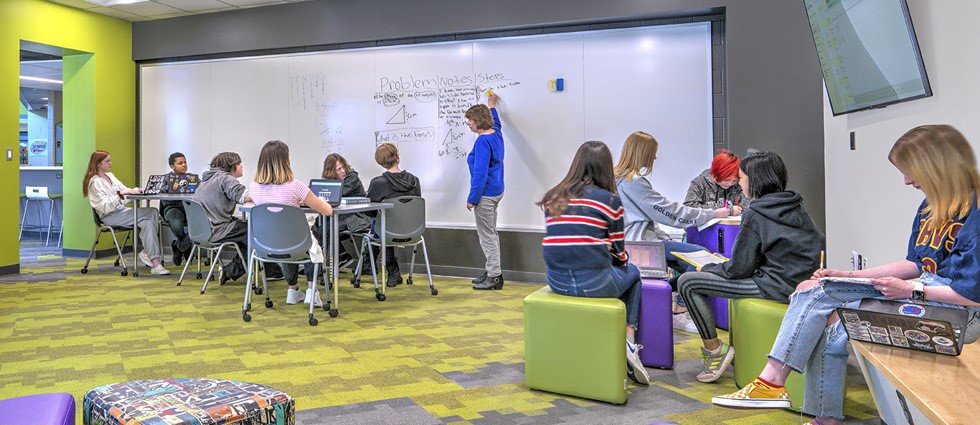
Flexible seating allows students to choose where and how they want to sit in the classroom to feel comfortable and ready to learn. Studies have shown that when students are comfortable, they're more focused and engaged.
However, flexible seating can be a disadvantage if it's poorly managed. Due to the wide variety of options, flexible seating can be harder to keep clean. And it can be harder to maintain a sense of fairness, unlike traditional seating.
Here are three practical ways teachers can manage flexible seating in the classroom.
Implement flexible seating rules
Consider creating a list of rules that students must follow to use the flexible seating options.
The rules can consist of how students should sit and position themselves throughout the classroom, plus define what the seating options are. For example: no standing on the stools; no laying on the floor. Do use soft seating; do sit crisscross applesauce on the rug.
It can be difficult for students to decipher what counts as flexible seating because of the array of different options. For example, students may not know that a rug can be used as a place to sit. So, to avoid mix-ups, it's important to define what the options are early and often.
The rules can also establish clear guidelines for behavior and expectations. This includes teaching students how to respect each other's personal space and belongings, as well as how to transition between different seating options without disrupting the class.
In addition, consider showing students the best locations for different seating options in the room. Where a student sits in a classroom can impact their learning experience. For example, rocker chairs may work best near a bookcase or a window, while wobble stools may work best at a desk.
By setting these expectations early on, students will understand the importance of maintaining a positive and productive learning environment.
Show students how to tidy up
Cleanliness is an essential part of maintaining flexible seating. Consider giving students a presentation or a handout on how to clean the flexible seating in the classroom.
Take pictures of how you expect the seating to look when everything is put away and tidied up. This will quickly give students an idea of what it means to keep the room as organized and clean as possible.
If certain flexible seating options are washable, bring in cleaning supplies such as Clorox wipes so students can clean their seats after they rotate with other students. Or create a cleaning schedule to ensure that all flexible seating options are regularly maintained. Cleaning can be done weekly or on a monthly basis depending on the level of usage.
Assigning different students or groups of students to clean specific seating options teaches responsibility and promotes a sense of ownership and pride in their classroom environment.
In addition to regular cleaning, encourage students to practice good hygiene habits. Remind them to wash their hands before and after using their seats to help prevent the spread of germs. Consider providing hand sanitizers or hand wipes if soap and water are not readily available.
Think about incorporating fun activities that involve cleaning. For example, they can organize a “cleanest seat” competition, where students are rewarded for keeping their seating area the cleanest.
This not only motivates students to maintain cleanliness, but also fosters a positive and engaging classroom atmosphere.
Rotate seating options on a regular basis
It can be easy for flexible seating to become unfair when there are multiple options.
A great way to make sure all students have an opportunity to get the same seating is to rotate seating options on a regular basis. This not only promotes equality but also encourages students to explore various seating styles that may enhance their learning experience.
One effective method is to create a seating chart that changes every week or month. This way, students will have the opportunity to sit in different areas of the classroom, whether it's at activity tables, on bean bags, or even on exercise balls.
By regularly switching up the seating arrangements, students can discover which options work best for them and learn how to adapt to a changing environment - a skill that extends far beyond the classroom.
To ensure a smooth transition between seating arrangements, involve students in the process. Ask for their input on which seating options they prefer or allow them to suggest new ideas. This not only empowers students but also encourages them to take ownership of their learning environment.
By defining the flexible seating options, guiding students in choosing appropriate locations, and establishing clear guidelines, students will enjoy a flexible and engaging learning environment.
Have questions? We're here to help! Our experts are available by phone at 1-800-260-2776. You can also get personalized assistance through our or by emailing us. We're available Monday-Friday, 8am-7pm.


